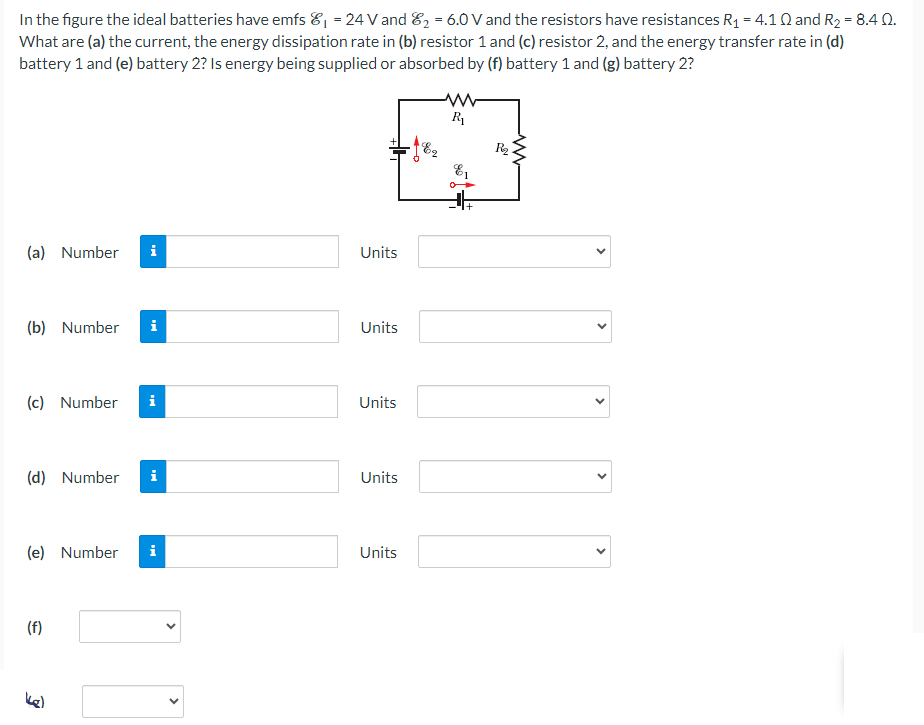In the figure the ideal batteries have emfs E1 = 24 V and E2 = 6.0 V and the resistors have resistances R1 = 4.1 Ω and R2 = 8.4 Ω. What are (a) the current, the energy dissipation rate in (b) resistor 1 and (c) resistor 2, and the energy transfer rate in (d) battery 1 and (e) battery 2? Is energy being supplied or absorbed by (f) battery 1 and (g) battery 2? (a) Number Units (b) Number Units (c) Number Units (d) Number Units (e) Number Units (f) g)
